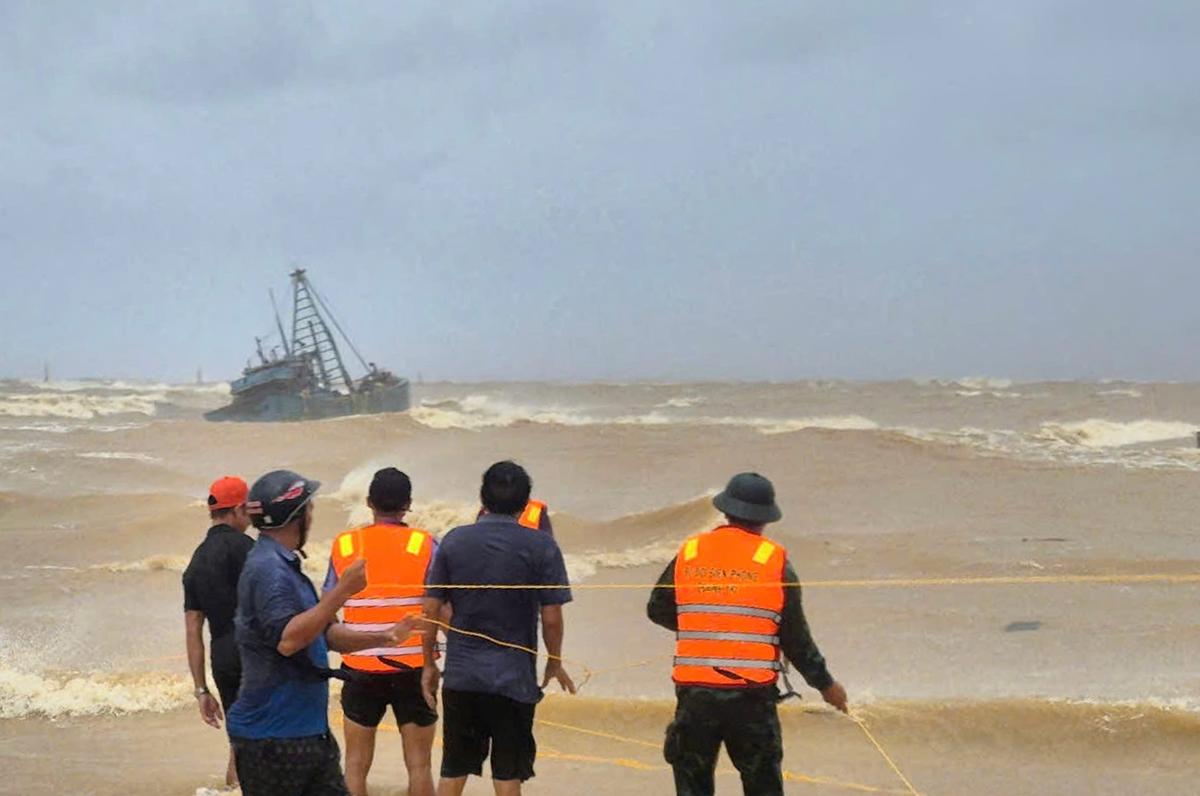Heavy rain and strong winds from the former Typhoon Bualoi flooded roads, knocked off roofs and caused at least nine deaths in central Vietnam before it weakened to a storm that moved on Monday (September 29, 2025) into Laos, state media reported.
The storm tore through communities, damaging houses, schools and power poles, sweeping away temporary bridges and flooding roads and low-water crossings across several provinces. Flooding in cities submerged vehicles, and many highland communities were cut off.

State media said rescue teams were searching for 17 missing fishermen.
Forecasters in Vietnam said that at 10 a.m. on Monday, the storm’s centre was over land near the border of Nghe An province and Laos, with winds of 74 kph (46 mph). They said it would push deep into central Laos.
Vietnamese authorities grounded fishing boats and suspended operations at four coastal airports. Six of the deaths occurred in the scenic province of Ninh Binh, where strong winds collapsed houses.
A local official in Thanh Hoa province, Nguyen Ngoc Hung, died when a tree fell on him as he returned home after a night of storm preparations, reports said. One person was killed after being swept away by floodwaters in Hue city. Another fatality was reported in Danang.

People work to rescue fishermen on a stranded fishing boat due to Typhoon Bualoi in Quang Tri, Vietnam Sunday, Sept. 28, 2025.
| Photo Credit:
AP
In Quang Tri province, strong winds broke the ropes anchoring a fishing boat taking shelter, sending nine crew members and the vessel adrift. Four managed to swim ashore. In Gia Lai province, families reported losing contact with eight fishermen on a fishing trip.
State media said more than 347,000 households lost power before the typhoon made landfall just after midnight on Sunday. Strong gusts ripped corrugated iron roofs from homes along highways and toppled concrete pillars.
In Phong Nha, known for some of the world’s largest caves, residents described “terrible gusts” of wind and pounding rain.
“No one dares to go out,” said Le Hang, a local resident, to state media VNExpress.
Vietnam evacuated thousands from central and northern provinces as the storm approached faster than expected. It came ashore in the northern coastal province of Ha Tinh around 12:30 a.m., bringing winds of up to 133 kph (83 mph), storm surges of more than a meter (3.2 feet) and heavy rain.
Bualoi had already caused at least 20 deaths in the Philippines since Friday, mainly from drownings and falling trees, and knocked out power in several towns and cities, officials said. It forced about 23,000 families to evacuate to more than 1,400 emergency shelters.

This was the second major storm to threaten Asia in a week. Typhoon Ragasa, one of the strongest to hit in years, left at least 28 deaths in the northern Philippines and Taiwan before making landfall in China and dissipating Thursday over Vietnam.
Global warming is making storms like the July storm Wipha stronger and wetter, according to experts, since warmer oceans provide tropical storms with more fuel, driving more intense winds, heavier rainfall and shifting precipitation patterns across East Asia.


